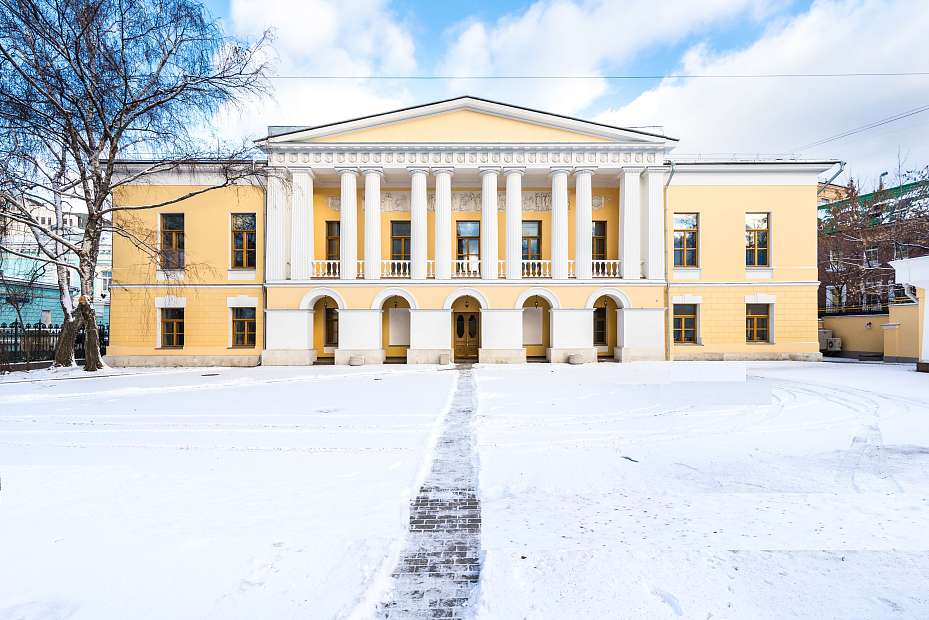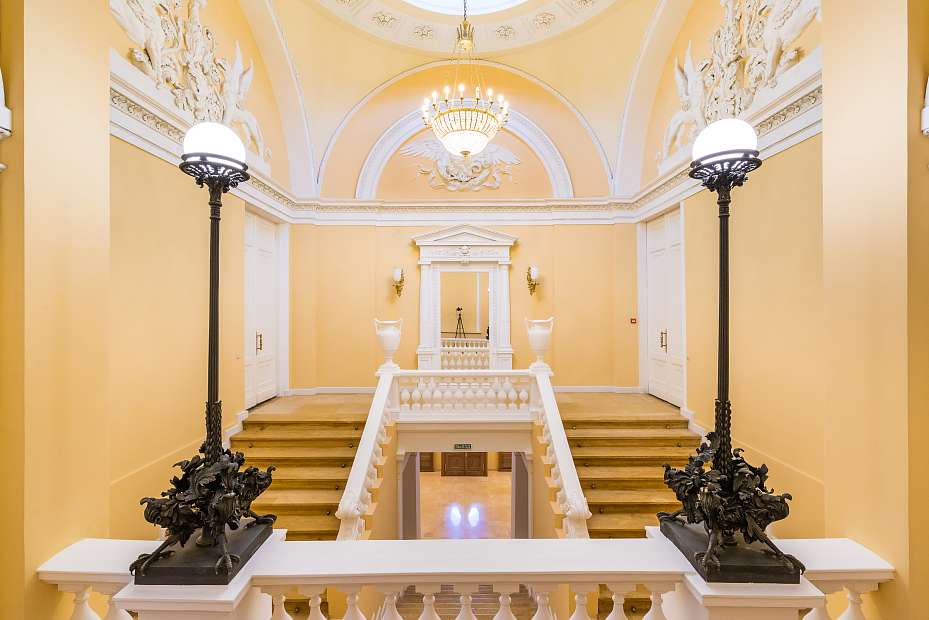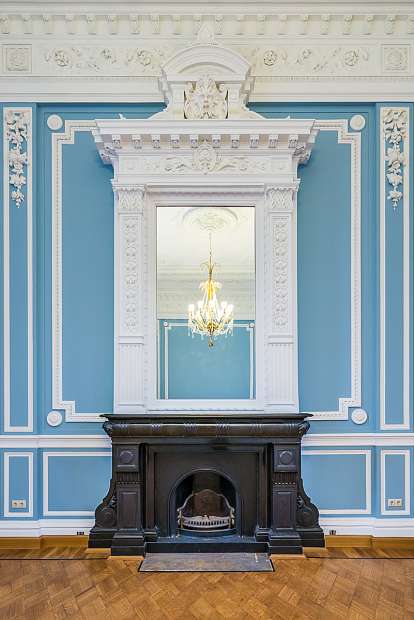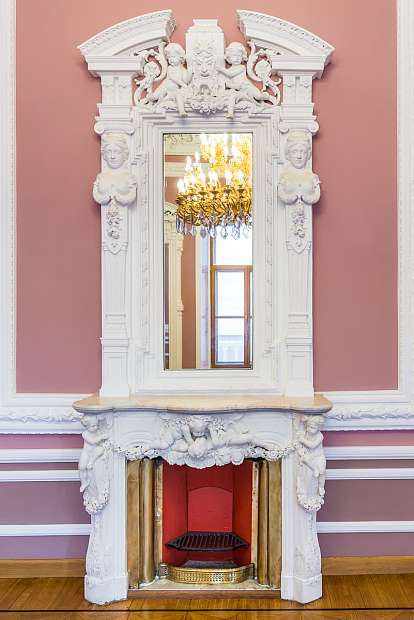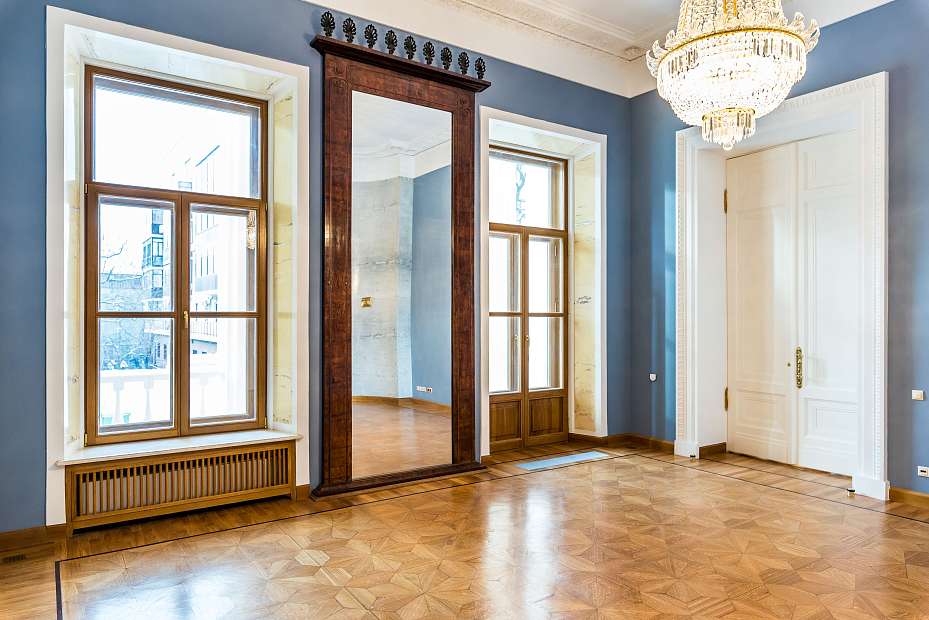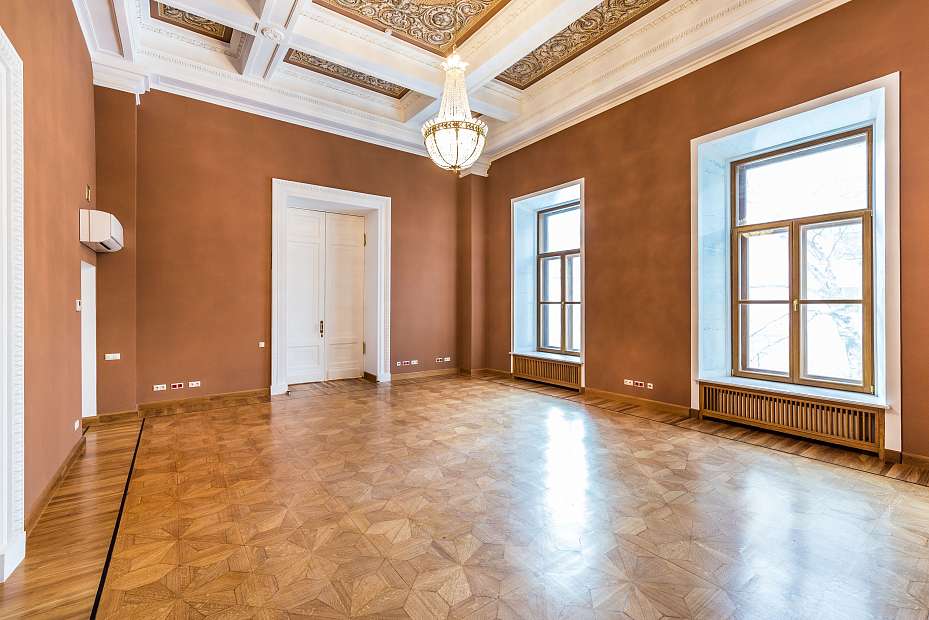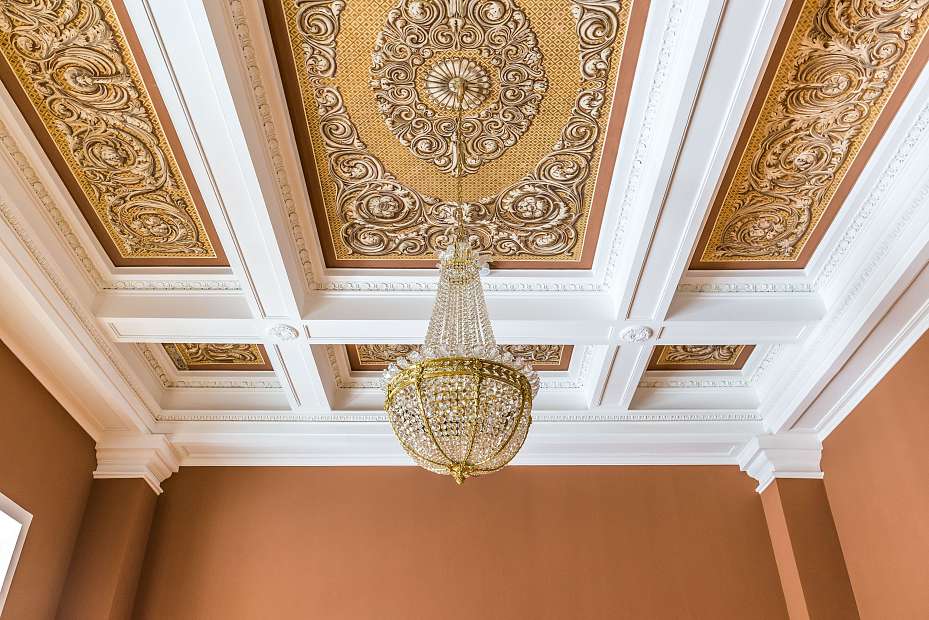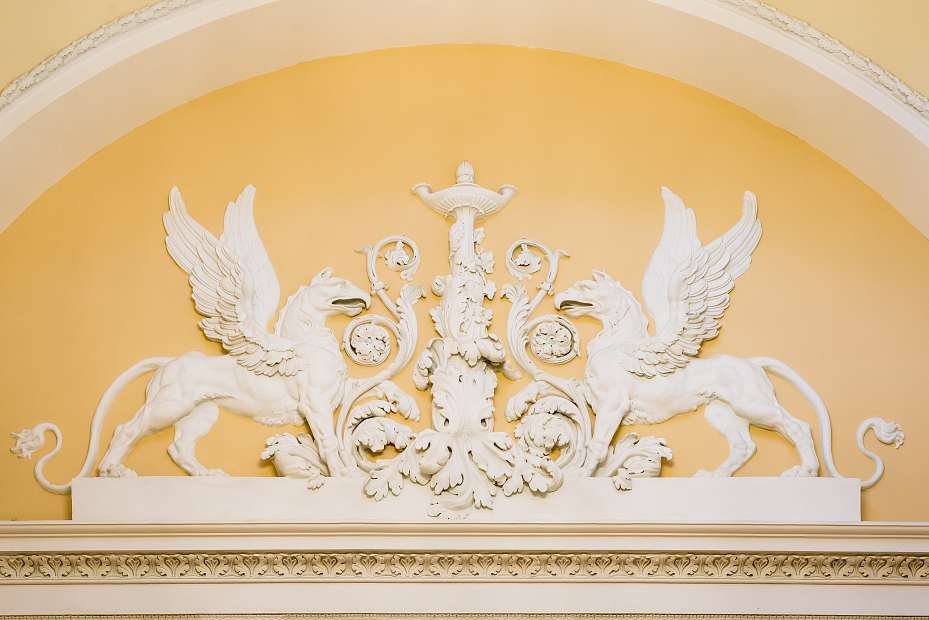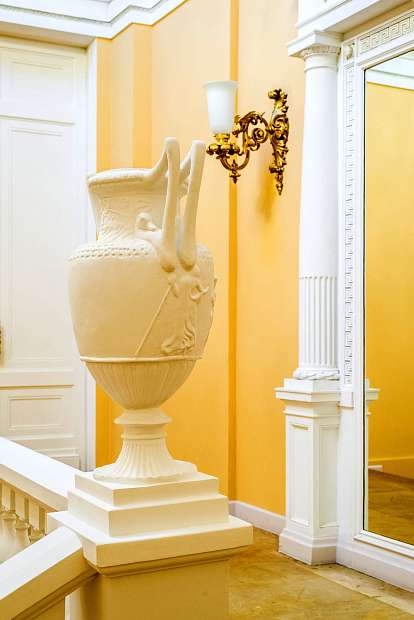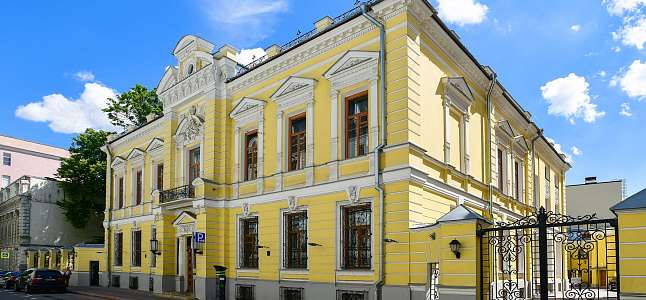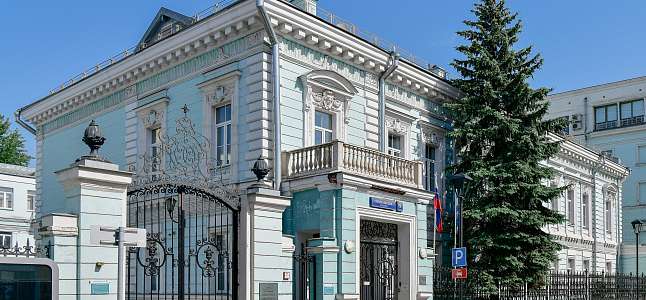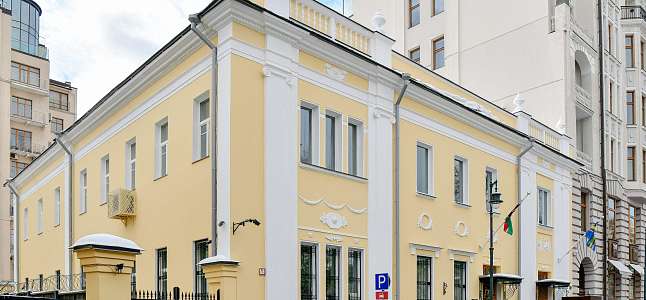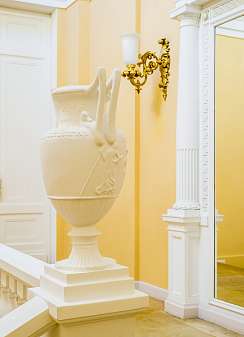
House from the early 19th century
GlavUpDK under the MFA of Russia finalized complex restoration of a historical mansion in Leontyevsky Lane in 2015 under the program of restoration of cultural heritage sites under its jurisdiction.
The mansion acquired its modern shape in the early 19th century after the plot had been procured by Guards Capt. Nikolai Volkov, a relation to Maria Volkova, the famed maid-of-honor of Empress Maria Feodorovna (spouse of Alexander I). The house was not damaged much in the Moscow fire of 1812 but developed features of the Empire style after renovations.
The project was authored by Afanasy Grigoriev, an associate of the celebrated Gilardi. A portico with eight pairs of Doric columns was built between the facade’s side projectures, the interior was adorned with spiral staircases, and ceilings were decorated with elegant moldings before the house was sold to its next owner. In 1848 Governor General Prince Arseny Zakrevsky moved in, and Agrafena Zakrevskaya, once the most beautiful woman of St. Petersburg dubbed ‘bronze Venus’ by Pushkin, took charge of the mansion.
The house had been a fashionable literary salon and a center of Moscow’s cultural life for a decade. It stood empty for some time afterwards until ‘fur king’ Pavel Sorokoumovsky purchased it in 1880. The ‘fur Faberge’ made himself known by winning a contract for royal robes used at the coronation of Emperor Nicholas II and by restoration of a treasure of the Russian empire, the famed Monomakh’s Cap. As a recognized supplier of His Majesty’s Court, the Sorokoumovskies successfully sold ‘Russian sables’ in Europe and America and became the biggest company on the global fur market. The house adorned in merchant pearls became even more luxurious.
Some say acclaimed architect Alexander Kaminsky, a forerunner of Moscow Art Nouveau, took part in the project. A family chapel was attached to the building from the side of the courtyard in 1882; it was transformed into a great dining room in a later period. A subtle luxurious feel was added to the mansion’s interior. The walls were decorated with paintings by Aivazovsky, Tropinin and Levitan and Italian mirrors. The halls were lit by pretentious Venetian chandeliers.
After the 1917 Revolution, the house accommodated the Moscow Communal Museum, the House of Education Workers, and the office of the Uchitelskaya Gazeta newspaper... It was handed over to GlavUpDK only in 1950, and in 1960 the Greek Embassy moved in. The interiors of the late 19th — early 20th century were restored in the mansion. The two-flight staircase to the suite of rooms on the upper floors, the decorated ceiling delicate paintwork, the fine-fretted friezes, bronze mirrors and lamps were revealed to visitors.
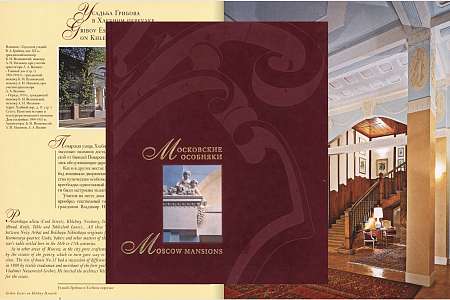
Restoration (2015)
 Moscow Restoration 2015 contest winner in the nominations ‘Best Restoration Project for Cultural Heritage Site’ and ‘Best Organization of Repairs and Restoration of Cultural Heritage Site’
Moscow Restoration 2015 contest winner in the nominations ‘Best Restoration Project for Cultural Heritage Site’ and ‘Best Organization of Repairs and Restoration of Cultural Heritage Site’
GlavUpDK under the MFA of Russia completed a comprehensive science-based restoration of a historical building in Leontyevsky Lane in 2015 within the framework of the program of restoration of cultural heritage sites under its jurisdiction.
Lt. Gen. Prince Grigory Meshchersky was the first owner of the mansion. Stone chambers were erected above cellars on his orders in 1761–1769. The mansion was damaged in the Moscow fire in 1812 yet its foundation survived. Fragments dating back to that period can still be seen in the mansion’s basement: these are a two-pillar chamber and two rooms featuring basket-handle arches above the eastern wing. The modern Empire look of the mansion appeared in the early 19th century as a result of restorations. The project was authored by Afanasy Grigoriev, an associate of the celebrated Gilardi. A portico with eight pairs of Doric columns was built between the facade’s side projectures, the interior was adorned with spiral staircases, and ceilings were decorated with elegant moldings in 1823.
The building was refurbished again in the 1880s after it had been purchased by ‘fur king’ Pavel Sorokoumovsky. Some say acclaimed architect Alexander Kaminsky, a forerunner of Moscow Art Nouveau, took part in the project. A family chapel was attached to the building from the side of the courtyard in 1882; it was transformed into a great dining room in a later period. A subtle luxurious feel was added to the mansion’s interior.
The mansion had many owners after the 1917 Revolution before it was put under the jurisdiction of GlavUpDK in 1950. The Greek Embassy has been stationed on its premises since 1960.
The building’s outline and facade decor dating back to 1823 have been preserved till today. Its interiors were restored the way they were in the late 19th — early 20th century.
“Columns, pilasters and facade bas-reliefs are the principal distinctive features of the mansion,” chief architect of the restoration project Yelena Konstantinova said. Many details have origins with Greece though. For instance, the bas-reliefs depict ancient scenes, and the wall overlooking Leontyevsky Lane carries an image of The Three Graces, an early painting by Raphael.
Restorations revealed the entire splendor of the mansion’s facade and artistic plaster moldings inside. The interiors of the 19th-century luxurious ballrooms were preserved. The two-flight staircase to the suite of rooms on the upper floors, the delicate paintwork, the fine-fretted friezes, bronze mirrors and lamps, and marble fireplaces were revealed to visitors.


